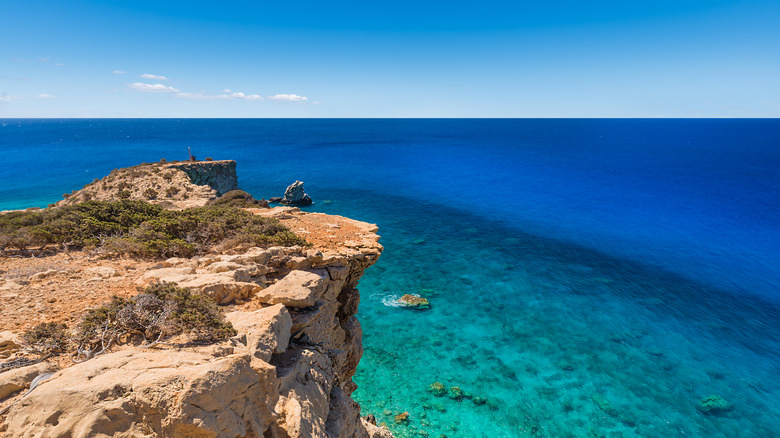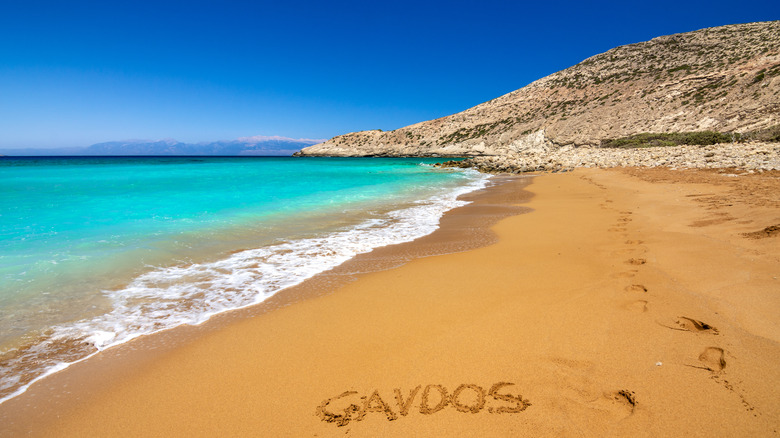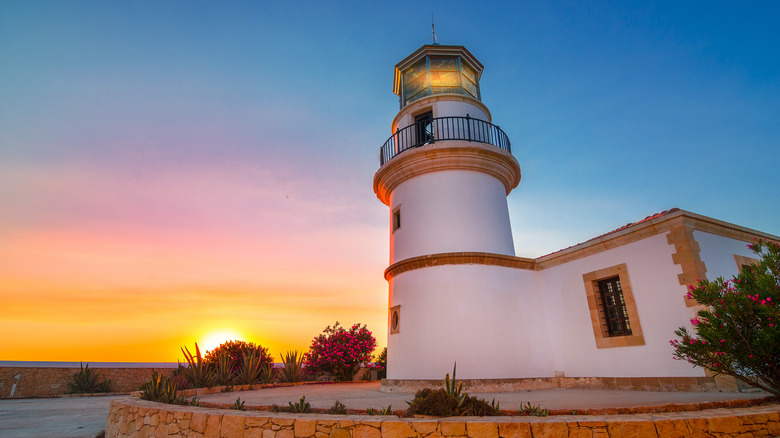This Lesser-Known Island Is The Southernmost Place To Be In Europe With A Picturesque Beach
When you think of a beach vacation in Europe, your dreams of lounging in the sand and sipping delightful cocktails may quickly be replaced by nightmares of trying to find parking. There might not even be a spot for your towel during high tourist season, and you might have to fight over that last bottle of sunscreen in your hotel's gift shop. It's no secret that these lovely places aren't exactly off the beaten path, and you'll probably have to deal with crowds.
However, if you don't have a specific destination in mind, we have a great beach in Europe — on an island, no less — that doesn't have large crowds. In fact, there aren't even that many residents. This area not only has a fascinating history but also a very famous myth attached to it. This European beach is in Greece. As far as beach weather is concerned, it's perfect for a big chunk of the year, as it is the southernmost point in Europe. We're talking about the island of Gavdos, south of the island of Crete. It's small, just under 13 square miles, but it has quite a few fascinating elements to facilitate a recommendation. Let's take a look at the history and mythology attached to this beautiful island and what you can do there on vacation.
Mythology, history, and how to get to Gavdos island
"Gavdos" might not be a name you recognize from ancient Greek stories, but it had another name back then. If you know Homer's "Odyssey," perhaps you recall that the main character, Odysseus, took many years to return from the Trojan War. He kept getting waylaid by events, including one where the nymph or goddess Calypso held him as a prisoner for seven years. According to some sources, this island, called Ogigia (though there are a ton of different spellings in English; Ogygia, for one), was actually Gavdos. It was also a spot where the famous pirate Barbarossa hid out from time to time.
It's pretty quiet on Gavdos, with around 200 all-year residents, though it gets busier in the summer. At one point in the past, during the Byzantine era, it was much more populated. In the 1930s, it was a place where communist exiles from Greece were sent, including Aris Velouchiotis, and during WWII, the Germans occupied it. These days, there is a big hippie and naturalist population that shows up in the summer, so keep that in mind if nudity isn't your bag. If you don't mind a little peace and love or have no problem if that's the price for a less packed beach, you can get there by a four-hour ferry from Crete. However, note that it doesn't run every day and is less frequent during the winter.
What to do on Gavdos
There are a number of beaches on this small island, and the most well-known ones include Agios Ioannis Beach and Korfos Beach. Additionally, there's Sarakinikos Beach, named after Saracen pirates who worked from here. Tripiti Beach, too, has incredible natural stone arches for some good social media shots. You can explore caves at Agios Ioannis, which is a big area for the naturalist population. You may also want to visit Diana Beach on the west side, as it was named for the late Princess Diana, who visited it. It's only accessible by boat. The water at these beaches is clear and blue, and you might even find an old Roman or prehistoric artifact like pottery shards, as they have on Sarakinikos.
If you want to break a sweat before you hit the shore, Gavdos has a lot of great hiking trails. There is a moderate one from Kastri near the island's center to Sarakinikos in the northeast that is 3.5 miles from point to point. You could also try the Korfos to Tripiti route, which is 5.1 miles long out and back. It's a bit harder than the last one, taking you along hills and down a ravine.
Finally, if you want to do some sightseeing, you can visit the 1880 lighthouse near Ambelos on the island's west side. It was bombed in WWII and was redone in 2003. There is a museum in there now, and you can grab some snacks as well.


